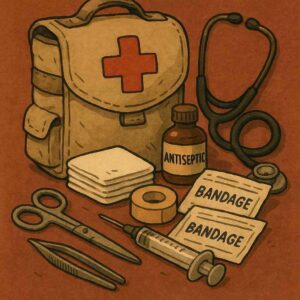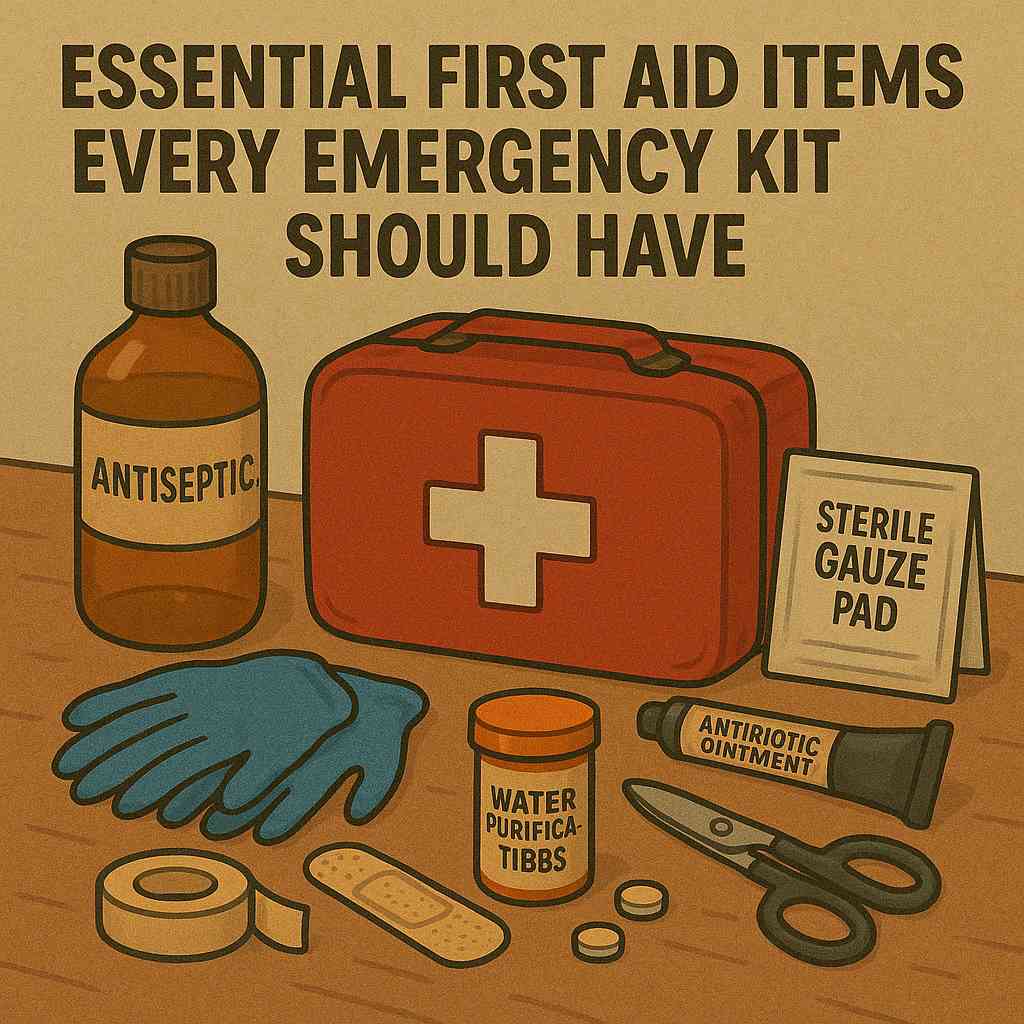Emergencies don’t wait. Accidents, injuries, and sudden health crises can strike when you least expect them—especially during disasters when help is delayed. Without a well-stocked first aid kit, even minor injuries can become life-threatening. Preparation is your first line of defense. Here’s how to build a first aid kit that can truly save lives when every second counts.
- ✅ Why First Aid is Critical During Emergencies
- ✅ Top 10 First Aid Items You Must Have
- ✅ How to Customize Your First Aid Kit for Your Family
- ✅ Where to Store Your Emergency First Aid Kit
✅ Why First Aid is Critical During Emergencies
During a disaster, professional medical help may be hours or even days away. Treating injuries quickly can prevent infection, control bleeding, and save lives. First aid skills and supplies allow you to stabilize injuries and manage conditions like shock, burns, fractures, and wounds. Whether it’s a minor cut or a serious accident, having the right supplies can dramatically increase survival chances during any crisis.
✅ Top 10 First Aid Items You Must Have
Every emergency kit should include these must-have first aid items:
- Sterile gauze pads and adhesive bandages
- Antiseptic wipes and ointments
- Medical tape and scissors
- Elastic bandages for sprains
- Thermometer and tweezers
- Disposable gloves (nitrile preferred)
- Pain relievers (ibuprofen, acetaminophen)
- Burn cream and aloe vera gel
- CPR face shield and emergency blanket
- Personal medications with prescriptions
These basics cover bleeding control, wound care, minor burns, and trauma. Regularly check your kit and replace expired supplies.

✅ How to Customize Your First Aid Kit for Your Family
Not all families have the same needs. Tailor your first aid kit based on age, health conditions, and personal risks. For families with young children, include pediatric medications and child-sized supplies. For elderly members, stock up on blood pressure monitors or diabetic supplies if needed. Pets? Add animal-specific first aid supplies too. Customization ensures you are genuinely prepared for your household’s unique needs.
✅ Where to Store Your Emergency First Aid Kit
Store your first aid kit in an easily accessible, clearly marked container. Waterproof and durable boxes are ideal. Keep one at home, another in your car, and one in your bug-out bag. Time is critical during emergencies—you don’t want to waste it searching for supplies. Review the contents twice a year and update as your family’s needs change.
In a crisis, having the right first aid kit isn’t optional—it’s vital. Build your emergency kit with these essential first aid items, and customize it to fit your family’s needs. Being prepared means turning chaos into calm when every second matters. Start building your kit today, and be ready when disaster strikes.
✅ Frequently Asked Questions (FAQ)
- Q1. What are the most important first aid items for an emergency kit?
Bandages, antiseptics, gloves, and personal medications are top priorities for every emergency kit. - Q2. How often should I check my first aid kit?
Review and restock your kit at least every six months to replace expired or used items. - Q3. Should I have a first aid kit in my car?
Absolutely. Accidents can happen anywhere, and quick access to supplies is crucial during road emergencies. - Q4. Can I buy a premade first aid kit?
Yes, but always customize it to match your specific needs, adding extra medications or specialized supplies as needed.
Need a full emergency gear setup? Check out our guide on building the perfect bug-out bag to complement your first aid kit.
For professional first aid tips, visit the Red Cross First Aid Kit Guide.

